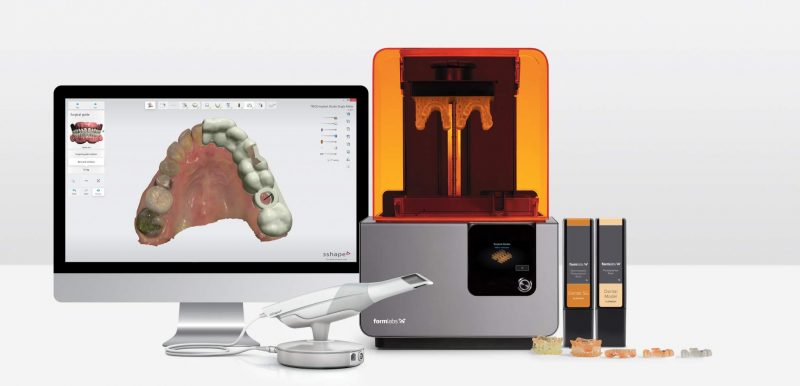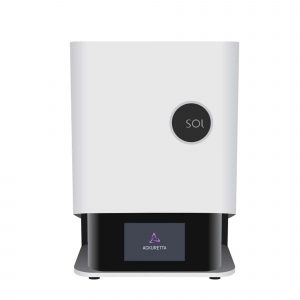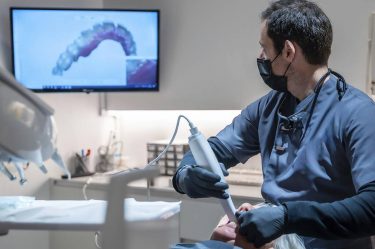3D Printing in Dentistry: How it is Changing the Future of Dental Care

Dentistry is an evolving field due to the creation of new technologies that facilitate patient care, simplify processes, and provide more accurate treatments. Among the most revolutionary changes within the last few years have been those initiated by 3D printing. 3D printers are now quickly becoming essential components in modern dental practice because it can produce custom Dental restorations quickly and accurately.
We are going to discuss in detail how 3D printers work, resins used in dental applications, benefits for dentists, and identify some of the best brands of 3D printers for the dental market available at online dental store.
What is 3D Printing and How Does It Work in Dentistry?
3D printing, also known as additive manufacturing, is a direct buildup of three-dimensional objects layer by layer based on a digital design. In dentistry, 3D printing enables dental professionals to make highly accurate, custom dental products in-house, such as Crowns, Bridges, Dentures, and Orthodontic Aligners, from a purely digital model.
A Digital Impression or scan of a patient’s mouth can be imported into specialized software to generate a model, which is built layer by layer by the printer placing down material such as resin or wax and curing it with a light source, which is usually ultraviolet (UV) light. This goes on layer by layer until the final product is achieved.
Types of 3D Printers in Dentistry
There are various types of 3D printing technologies. Each one has a specific application in dentistry. The two most commonly used online dental equipment in dental practice are:
-
Stereolithography (SLA) Printer
SLA prints work by curing liquid resin layer by layer with a laser that builds up a solid object. It is a high-resolution printer that can print the most detailed dental restoration. SLA is the most common method used in 3D printing in the dental field.
-
Digital Light Processing (DLP) Printers
DLP is similar to SLA, but the former uses a digital projector that cures resin instead of a laser. The benefit of DLP printers is that they print faster than SLA printers because they cure the entire layer at once instead of point-by-point. The DLP printers are quite effective for printing orthodontic models, surgical guides, and dental prosthetics.
-
Poly Jet Printers
Poly Jet is a well-known technology that prints in multiple materials simultaneously. In dentistry, it is usually applied for making very precise dental models and dental prototype studies.
Role of Resins in Dental 3D Printing
The type of resin is one of the key considerations in dental 3D printing. Dental resins are specially formulated materials for curing under UV light and solidify to form a shape that is suitable for forming dental devices. These materials are specifically formulated for use in the dental application to be able to provide both strength and biocompatibility along with precision.
Dental Model Resin: These are resins commonly used to make very detailed and accurate models of the teeth. The application areas of dental model resins are found in the fields of treatment planning, prosthetic design, and orthodontics. In most cases, dental model resins are rigid with a very smooth surface finish to allow accurate representation of the patient’s mouth.
Surgical Guide Resin: Surgical guide resins are used to generate custom guides for implant surgery. They ensure that placement of dental implants is accomplished with a high degree of accuracy. These resins are biocompatible and remarkably resistant, which enables these procedures to be carried out with high accuracy.
Crown and Bridge Resin: These resins offer long-lasting crowns and bridges along with superior wear resistance and strength. They are usually tooth-colored to be in synchronization with natural teeth and can be used for anterior as well as posterior restorations.
Biocompatible Resin: This resin is used in manufacturing dental appliances like aligners, dentures, and orthodontic retainers. Biocompatible resins fulfill safety and health requirements so that they do not cause harm to the body and can be used for an extended period in the mouth.
Casting Resin:This makes casting resins a favorite for the creation of metal casting patterns, including any needed for a gold, silver, or titanium dental restoration. Casting resins will not burn at high temperatures during the casting process.
Why Should Dentists Invest in a 3D Printer?
For dentists, the investment in 3D printing technology has numerous benefits that go from high-quality care to more efficient execution in their practice. Here are some of the key reasons for dentists to consider adding 3D printing to their practice:
1. Precision and Accuracy
That is, 3D printing has no one else matched its precision for the production of restorations where they will always fit precisely; dentists are also in a position to make high-precision crowns, bridges, dentures, and other appliances using the 3D printer with significantly fewer adjustments for patients who end up better off as an outcome.
2. It provides faster turnaround time
Regarding the time factor, in using 3D printing, the time required to fabricate a custom restoration is cut back. One example is that a large number of procedures which usually require multiple appointments and also time for lab work will now be replaced by same-day 3D printing. It just implies fewer chair time hours and happy patients.
3. Customization
It has a personalized treatment capability. For example, be it the manufacture of orthodontic aligners, guides for the placement of an implant, or even crowns, it allows one to have an optimum level of customization for the particular patient.
4. Cost-Efficiency
The 3D printing technique reduces overheads due to less outsourcing of laboratory work and more streamlined processes for manufacturing. The use of digital files also reduces the rate of errors and the resultant wastage of material. It is, therefore, highly cost-efficient.
5. Greater Patient Satisfaction
Patients appreciate faster treatments, less pain, and highly accurate restorations. Same-day treatments or customized dental appliances may help win the trust and loyalty of patients.
Top 3D Printer Brands for Dental Practices
Some of the essential things you would want to look for in a 3D printer for your dental practice are print quality, user friendliness, customer support, and integration with your preferred software. Here is the list of top brands within the dental 3D printing market:
1. Ackuretta
3d printer is another very popular brand in dental 3D printing. Famous for high-quality SLA printers, It gives the best print quality ever and is capable of producing a range of dental resins including biocompatibility for crowns, bridges, and dentures.
2. Asiga
Asigai actually the leader in additive manufacturing. There is a high degree of precision in printing that allows the machines to be so perfect for detailed dental models, surgical guides, and dental aligners.
3. Riton
Riton 3D Printer provides the widest range, one that is specifically designed for applications in dentistry with the highest precision. The vast number of 3D Systems printers is applied to dental labs for crowns, bridges, dentures, and much more.
4. Elegoo
Elegoo offers the most advanced 3D printing technologies for the dental industry. Among the high accuracy and reliable 3D printers available and also Elegoo 3d printer resin to produce dental models, crowns, bridges, and surgical guides are found in the Perfactory series.
Conclusion: Enter the Future of Dentistry
3D printing is no longer a myth of science fiction. Currently, it is absolutely important and practical for the conduct of modern dentistry. Besides cost savings, faster process, and higher accuracy rates, this modern tool further brings about greater patient satisfaction – but most importantly, changes in attitude by Dentists towards any dental restoration, implants or orthodontic solution provided.
An investment in a 3D printer material is an investment in your future practice, the key to providing your patients with pioneering solutions and staying at least one step ahead of others. Regardless if you’re a General Dentist, Orthodontist, or Prosthodontist, adding 3D printing will dramatically improve the quality and efficiency of your treatments.




No Comment